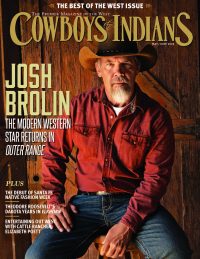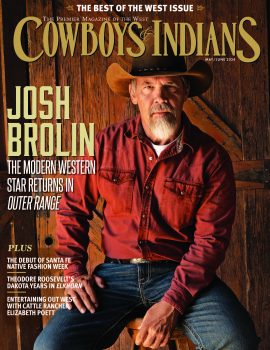The 1993 Western triumphed over production upheavals and mixed reviews to become regarded as a classic.
When Tombstone opened in theaters and drive-ins everywhere on Christmas Day 1993, some critics reacted as though Santa Claus had stuffed coal in their stockings.
“Highly stylized fashion-wise but awkwardly unfocused in its plotlines,” declared Richard Harrington of The Washington Post, “it aims for the Western iconography of Sam Peckinpah and Sergio Leone but never gets past its own directorial hurdles. Kevin Jarre, who wrote Glory and was set to make his directorial debut with this film, was fired a month into shooting and replaced by George Cosmatos (Cobra, Rambo: First Blood Part II). Cosmatos apparently did a Rambo on Jarre’s script, layering gratuitous violence on what was probably intended as a character study of classic Western types.”
Owen Gleiberman of Entertainment Weekly mocked the movie’s male characters for sporting “mustaches that would have looked right at home on The Carol Burnett Show,” and more or less dismissed the entire enterprise as a wasted opportunity: “If only director George P. Cosmatos (Rambo) knew how to do something with clichés other than throw them into the pot and stir. A preposterously inflated 135 minutes long, Tombstone plays like a three-hour rough cut that’s been trimmed down to a slightly shorter rough cut.”
“Tombstone,” added Stephen Holden of The New York Times, “is, finally, a movie that wants to have it both ways. It wants to be at once traditional and morally ambiguous. The two visions don’t quite harmonize.”
Other critics suggested (to put it politely) that Tombstone had been rushed into theaters in order to beat Wyatt Earp, the epic Western starring Kevin Costner in the title role, that was set for release in Summer 2024. Worse, most of those scribes predicted that movie — directed and co-written by Lawrence Kasdan (The Big Chill, Silverado) and co-starring Dennis Quaid as the consumptive Doc Holliday — would almost certainly be a better and truer retelling of events leading up to and following the infamous gunfight at the O.K. Corral.
But audiences begged to differ. And they voted with their wallets.
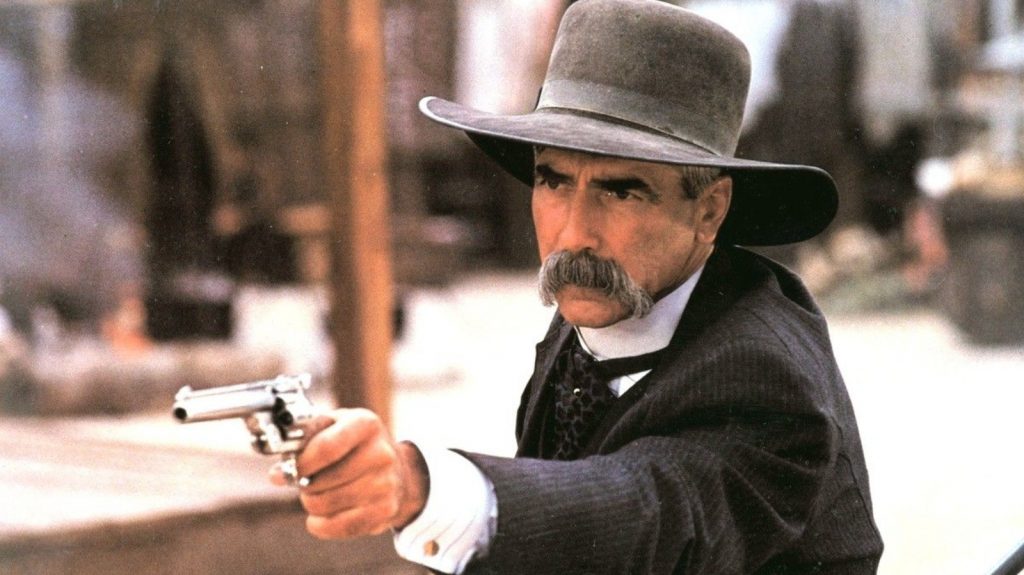
Tombstone wound up earning $56 million in domestic gross during its initial theatrical run — more than twice the amount recorded for Wyatt Earp the following year — and when all was said and done, actually fared better with critics. (Typical response: “Gorgeously shot and meticulously designed,” wrote David Ansen of Newsweek, “Wyatt Earp is big, solemn — and barely alive.”)
More important, Tombstone was embraced as a classic right from the start by the overwhelming majority of Western fans. It has continued to attract and impress viewers over the past three decades on home video, cable TV and streaming platforms, and remains ranked by its most enthusiastic admirers as one of the greatest Westerns of all time.
Not bad for a movie that, during its troubled production, was considered a risky proposition, if not a disaster in the making. Even by its star, Kurt Russell, who memorably portrayed lawman Wyatt Earp as an initially conflicted but ultimately obsessive dispenser of rough justice and sudden death on the mean streets of 1880s Tombstone, Ariz.
“We were in Arizona,” co-star Sam Elliott recalled for Entertainment Weekly in a 2019 interview, “and down in New Mexico they were making Wyatt Earp, Kevin Costner’s version. I remember sitting in the Holiday Inn one night. It was before we started, and Kurt was kind of angst-ridden about all of it because he was looking at a much bigger picture than I was, much bigger than all of us. I said, ‘What the bleep are you worried about, man?’ He said, ‘What do you mean?’ We had this kind of contentious relationship throughout, and I think it was really born in the relationship of the brothers, and we never got past that. I said, ‘They haven’t got this bleeping script and they haven’t got this bleeping cast.’ And that was the bleeping truth, you know? ‘Apart from that, sweat all you want.’”
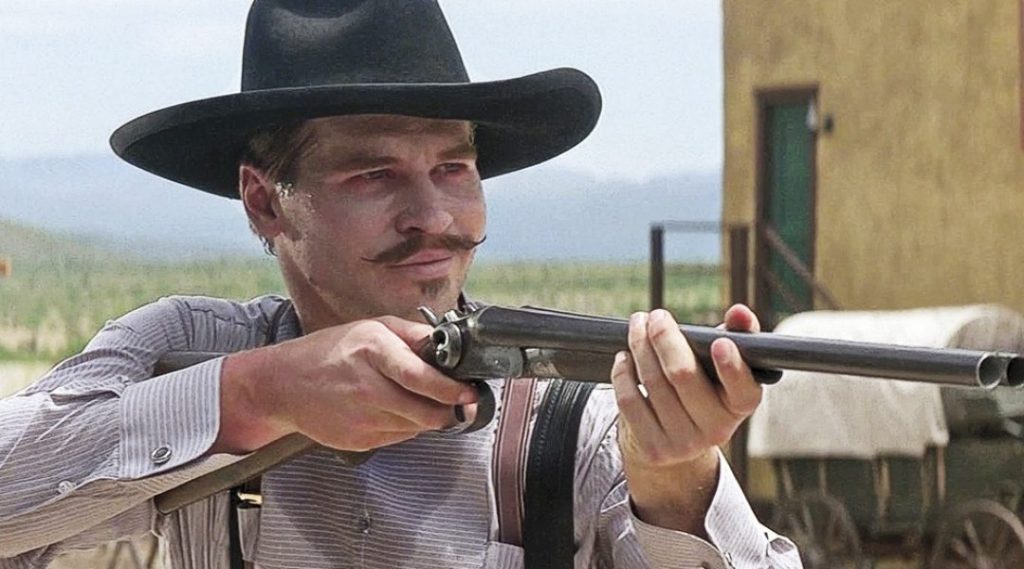
To be sure, there was lots to sweat about during the making of Tombstone. Kevin Jarre, who passed away in 2011 at age 56, was indeed let go barely a month into filming, and replaced by… Well, officially, by George P. Cosmatos, whose name appears in the credits, and who provided running commentary on a DVD labeled “The Director’s Cut” released in 2002. (“I like doing ensemble movies,” Cosmatos said, “because you create many stories within the story that build up the emotion.”) Over the years, however, many people involved with the film have claimed Cosmatos was merely a figurehead — and the real directing was done by star Kurt Russell.
“Kurt is solely responsible for Tombstone’s success, no doubt,” Val Kilmer wrote in a lengthy 2017 essay on his website. “I was there every minute, and although Kurt’s version differs slightly from mine, the one thing he’s totally correct about is, how hard he worked the day before, for the next day’s shot list, and [the] tremendous effort he and I both put into editing, as the studio wouldn’t give us any extra time to make up for the whole month we lost with the first director.”
After Jarre departed, Kilmer continued, “I watched Kurt sacrifice his own role and energy to devote himself as a storyteller, even going so far as to draw up shot lists to help our replacement director, George Cosmatos, who came in with only two days prep. I was very clear and outspoken about what I wanted to do with my role, and actors like Powers Boothe… and Bill Paxton were always 100 percent supportive, even in the blistering heat and sometimes as the day would fade, at the possible expense of their own screen time.
“Kurt did this for the film virtually every hour. I would even go up to him and whisper, ‘Go for another…,’ meaning another take when I thought he could go further, but in the interest of the schedule, he would pound on.
“That’s probably how it’s become a story that Kurt directed it. I have such admiration for Kurt as he basically sacrificed lots of energy that would have gone into his role, to save the film. Everyone cared, don’t get me wrong, but Kurt put his money where his mouth was, and not a lot of stars extend themselves for the cast and crew. Not like he did.”
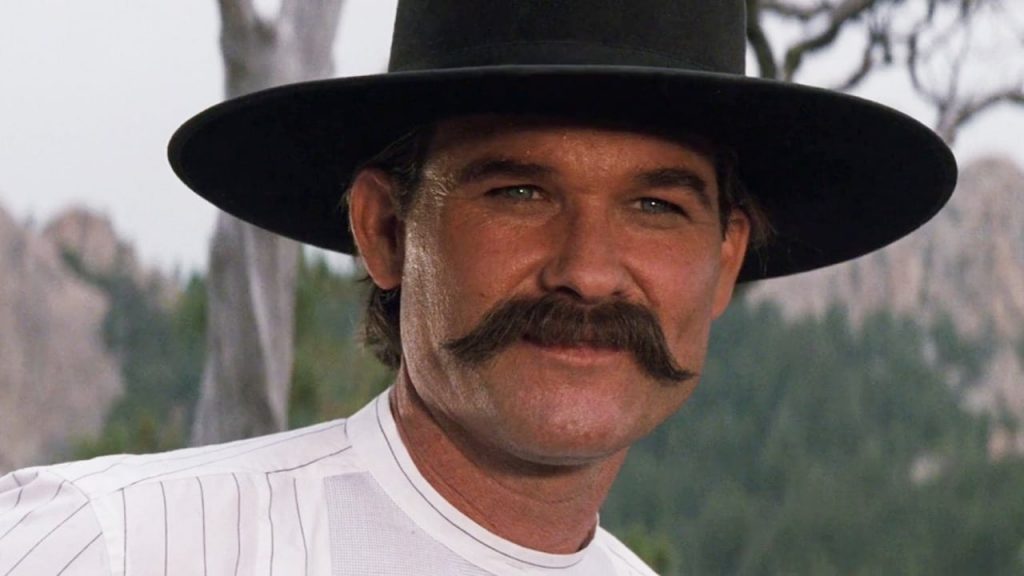
For the benefit of those who tuned in late: Kilmer made an indelible impact in Tombstone with his brazenly stylized and irresistibly entertaining portrayal of Doc Holliday as an effete but lethal gunman who casually tossed off colorful turns of phrase like a someone lazily throwing confetti at a New Year’s Party — when he wasn’t wracked with tubercular coughing.
Kilmer’s Doc Holliday always had the back of Wyatt Earp, his close and perhaps only friend, and he was joined in that regard by Sam Elliott and Bill Paxton as, respectively, Wyatt’s brothers Virgil and Morgan Earp. Together, they laid down the law, and filled more than a few graves, while dealing with such murderous villains as “Curly Bill” Brocius, played by Powers Boothe with such gleeful relish that his line “Well… Bye!” has become one of the most popular memes in the history of the Internet.
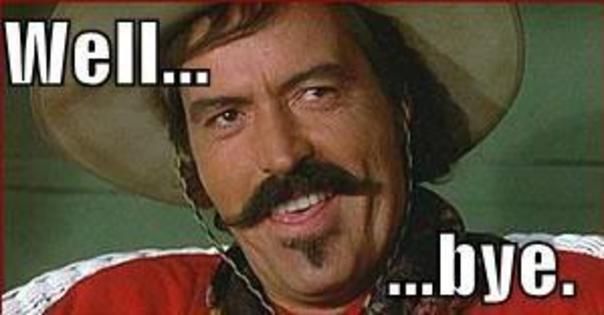
But Kurt Russell emerged as first among equals in an ensemble cast that also included, among other notables, Charlton Heston, Michael Biehn, Stephen Lang, Dana Delaney and Thomas Haden Church. Even some of the film’s fiercest critics were impressed by Russell’s performance: “Mr. Russell’s clear, steady portrayal of Wyatt Earp gives the film a core of emotional integrity,” wrote the New York Times’ Stephen Holden. “While he doesn’t project the mythic heroic stature of a Wayne or an Eastwood, he conveys the dignified rectitude of someone who has seen more than he wishes of the world’s evil and still believes that civility can prevail over chaos. As he faces two moral crises — one involving violence and the other love — you can almost feel the wheels in his mind turning as he decides what to do.”
And as for all the rumors claiming Russell, not Cosmatos, was the real ramrod on the movie, well, the veteran actor is still cagey when questioned about that aspect of Tombstone.
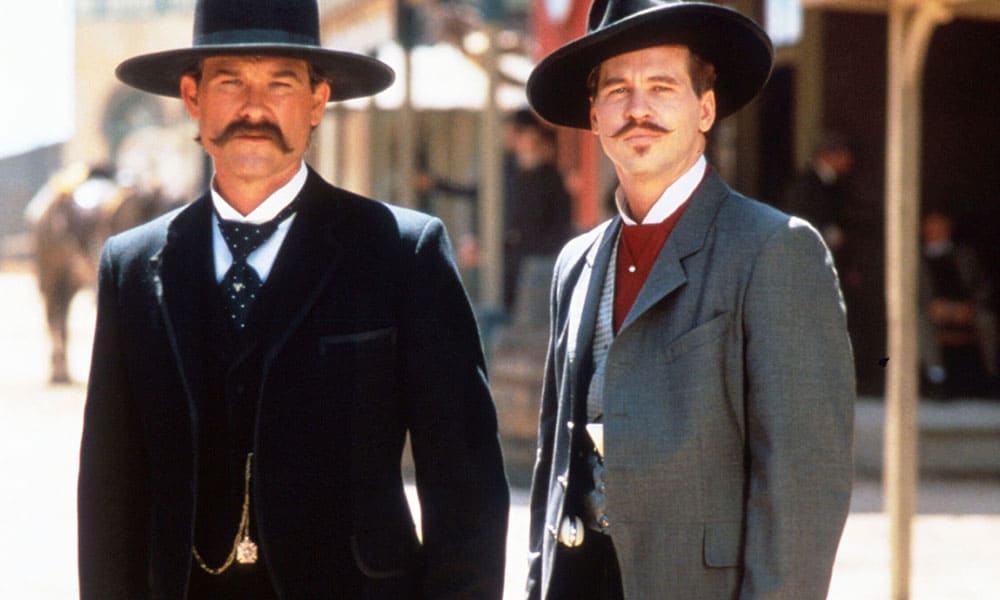
In a C&I interview just last year, Russell allowed: “Well, that was a situation where I had to cut 22 pages out of a script because the original writer didn’t, and we weren’t going to have enough money to finish the movie. And so I had to keep the trust of the actors that were involved. And I did that by eliminating five main scenes that I basically had done the movie for, but I felt like I had to cut if I could hold the thing together. I could get the movie made —and while it would not necessarily have the greatness of the original screenplay, it perhaps would have the impact that the screenplay would have had. And I think we succeeded in that regard. And I think that Val was great as Doc Holiday. And I think a lot of the other people in the movie were great at what they did as well.
“In my book, Tombstone might be as good as any Western ever written in terms of the dialogue.
Why was he so intent on finishing the film?
“I just wanted to make sure that this thing got made,” Russell said, “because I thought it was such a great screenplay. And I wanted that for Kevin. But he was having his difficulties, for sure, directing it. And I knew that they were going to come down on him, and they had to replace him. And there was a whole thing there.
“I made an agreement to not talk publicly about certain things in terms of how the movie got made. I hold fast to that. But to me, there’s a bottom line, which is that it almost doesn’t matter how a movie gets made. It’s just that it does get made and that the best version of it gets made. And without a director leading the way, that’s a very difficult thing to happen. And so you have to find your leader, the leader has to get you through, and you have to have that support. And that eventually happened on Tombstone. It was a difficult film, but it’s a great Western.”
Any regrets?
“I think that the screenplay was probably another 20 percent, maybe 20 percent better. But unfortunately, we were not able to do that because of what was spent in the first week of shooting. And they had their minds set — and I didn’t blame them on replacing Kevin Jarre. So that was done. And we got the movie made, and everybody did a great job by holding it together. And I think that all the actors worked extremely well together for the most part. It was a very difficult experience for me because I had gone out and gotten the money for the movie. That was the only time I ever did that. So I wanted to make sure I returned to the investor at least one dollar. And I did better than that.”
Much better, as a matter of fact.
“It’s just tough to beat in terms of entertainment — and in terms of accuracy, it turns out,” Russell said. “And I do feel that the movie has a great impact as it continues to move up the list of best Westerns as years go by. And I’m very proud of that one, there’s no question about it. There’s no reason not to be. That’s one entertaining movie.
“It’s like somebody put it to me. He wasn’t a professional critic, but he might be my favorite critic. He was comparing it to a few westerns that he’d seen when he said, ‘But when I seen Tombstone, I knew why them mother****ers must be famous.’ And I said, ‘You got it. That was what I was trying to get out there.’”



